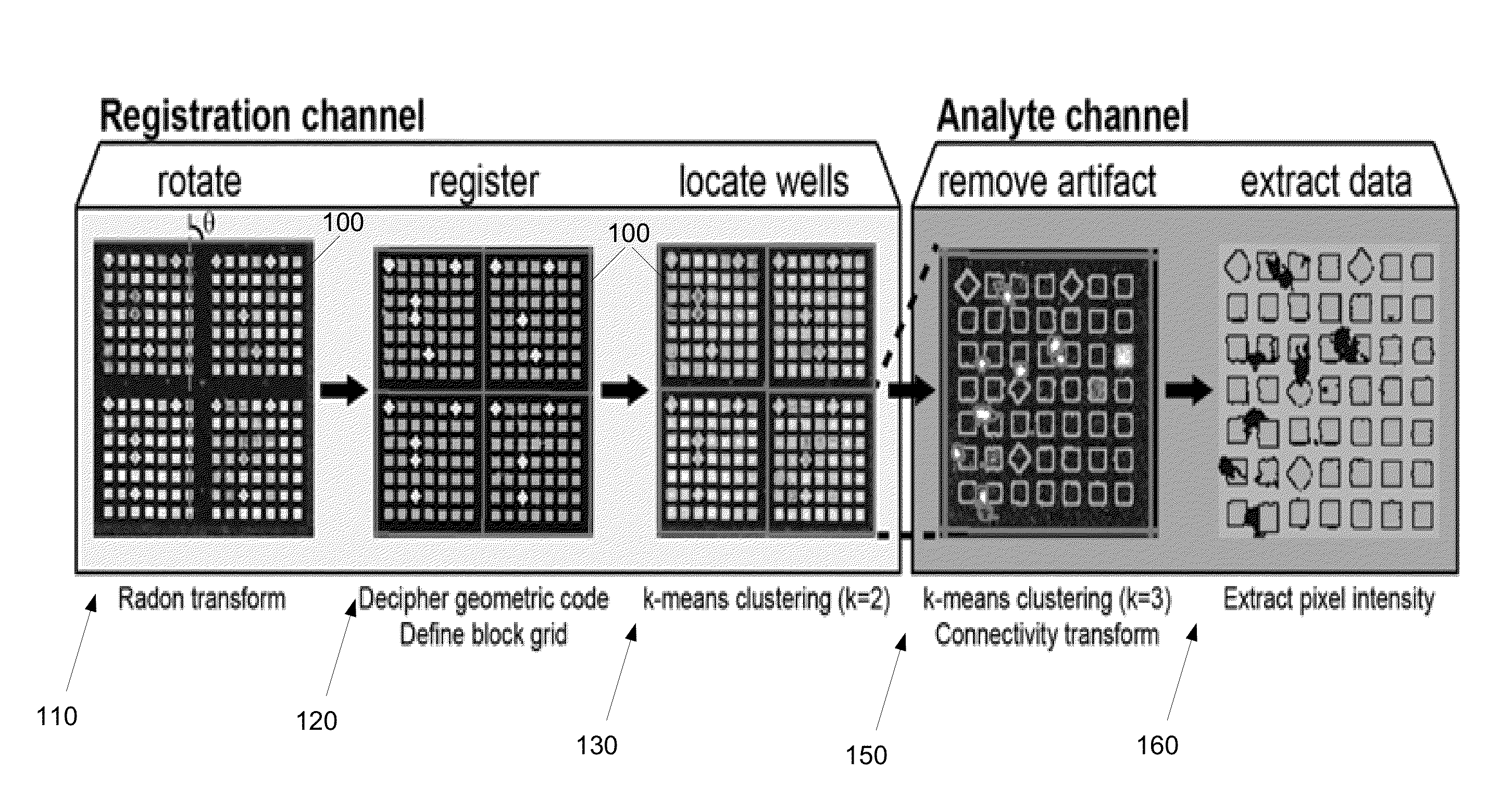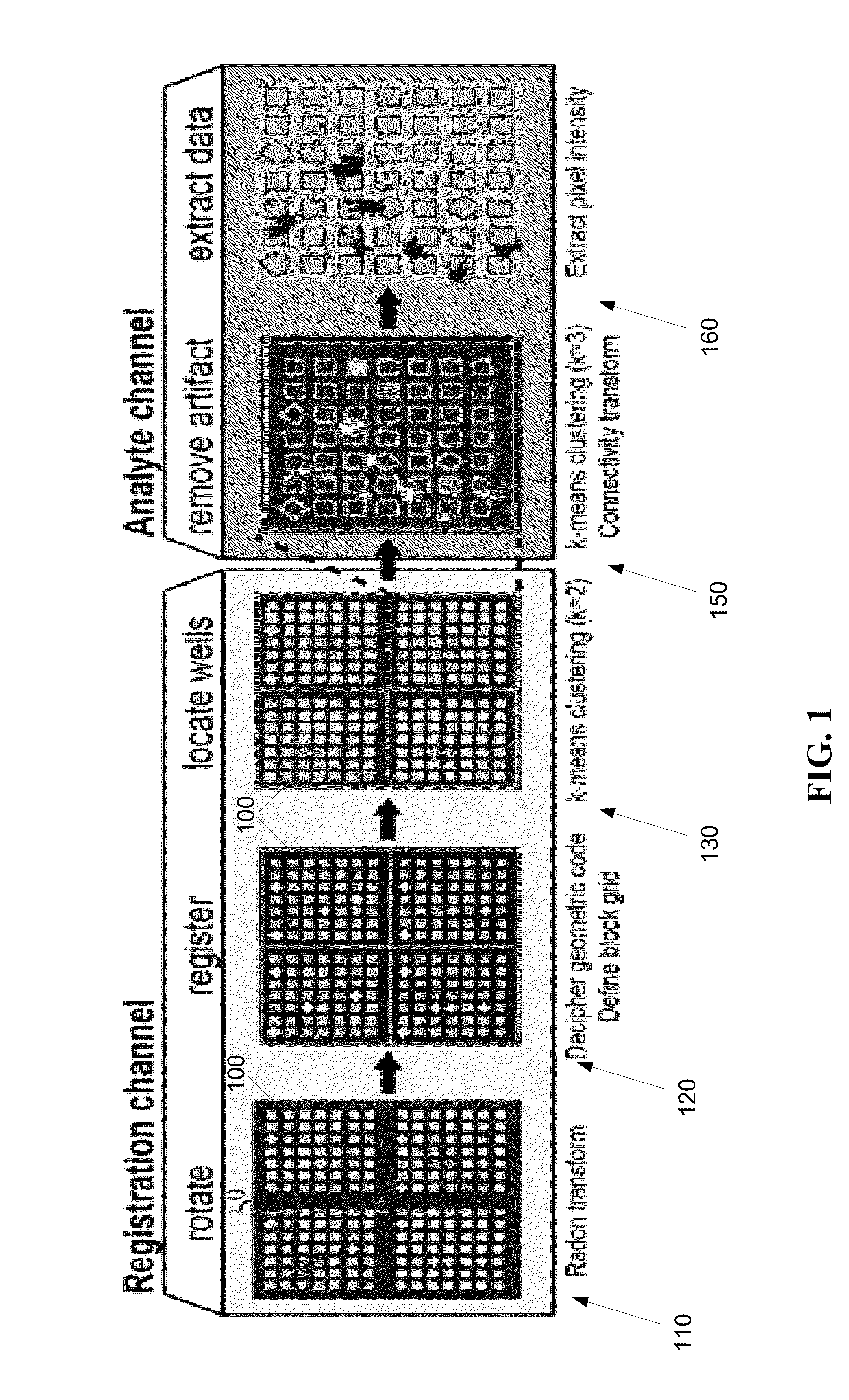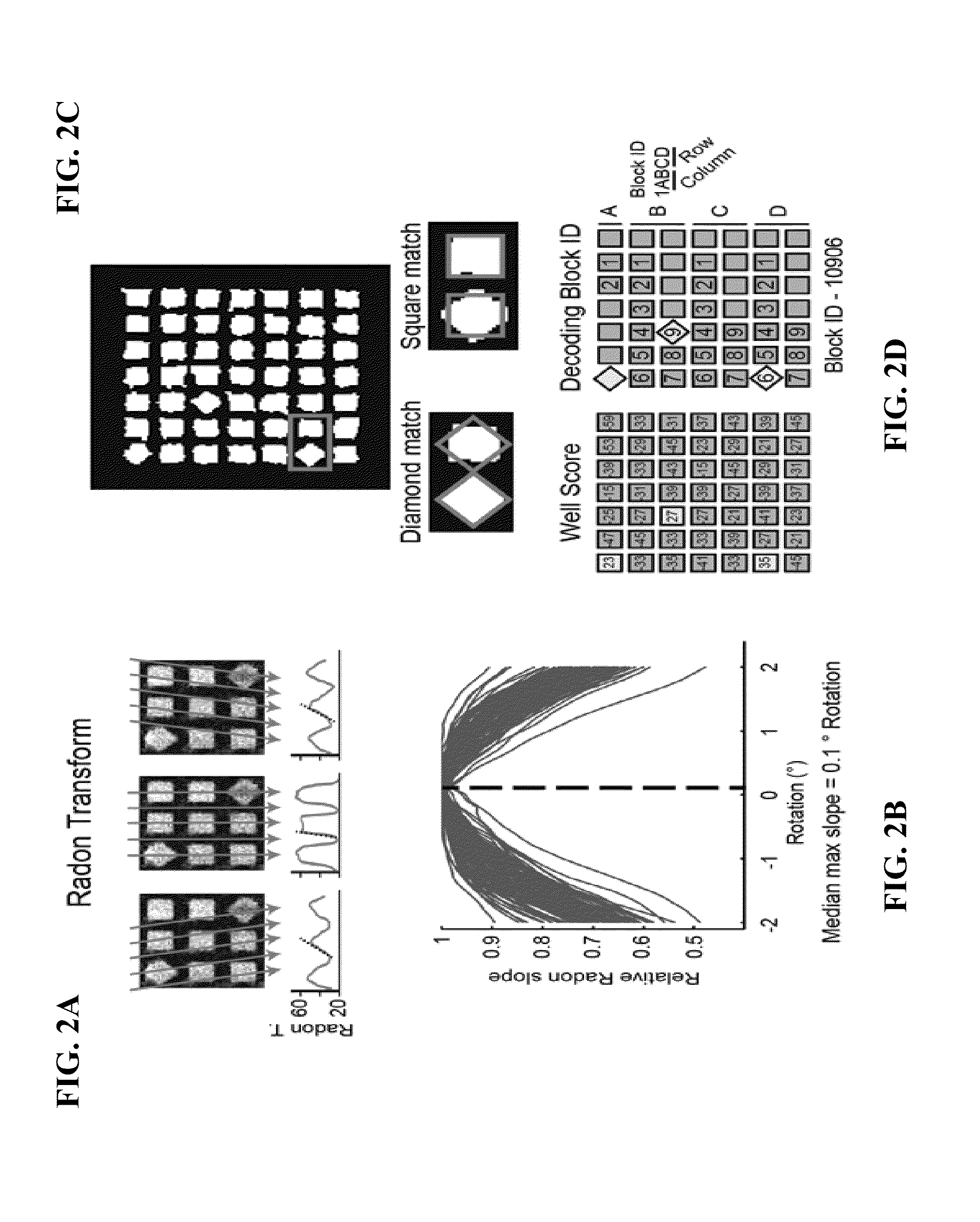Fully automated system and method for image segmentation and quality control of protein microarrays
a protein microarray and fully automated technology, applied in image analysis, image enhancement, instruments, etc., can solve the problems of inaccurate and expedient analysis of images, packages that cannot automatically handle the types of distortions commonly observed in protein microarrays, and bottlenecks in the use of this technology
- Summary
- Abstract
- Description
- Claims
- Application Information
AI Technical Summary
Benefits of technology
Problems solved by technology
Method used
Image
Examples
first embodiment
[0046]After straightening the image, the location of each block in the array is registered to assign an identity to each block. Microengraved arrays often fade near the edges due to imperfect sealing. This effect can lead to misalignment of the entire grid when the identity of each block is defined using only the visible edges of the array. To overcome this issue, the arrays of nanowells employ an internal geometric code using diamond and square wells within each block; this code allows non-ambiguous identification of any isolated block. The first embodiment robustly deciphers these geometric codes. The process breaks the image of the array into overlapping, block-sized sub images. Each sub image is then tested for the appropriate frequency of features using 1-D projections along the x- and y-axes to identify sub images that contain an entire block. These sub images are transformed into binary images by rank ordering the pixels based on intensity and selecting the expected number of...
second embodiment
[0057]FIG. 3E is a flowchart depicting the It should be noted that any process descriptions or blocks in flowcharts should be understood as representing modules, segments, portions of code, or steps that include one or more instructions for implementing specific logical functions in the process, and alternative implementations are included within the scope of the present invention in which functions may be executed out of order from that shown or discussed, including substantially concurrently or in reverse order, depending on the functionality involved, as would be understood by those reasonably skilled in the art of the present invention.
[0058]The initial segment of pixels, for example, 100 pixels of the array, are transformed into a 1-D projection by averaging the pixel intensity along the axis perpendicular to the inter-block signals emphasized by the image transformation, as shown by block 331. An adaptive threshold is then used to select the strongest number of signals, n, wh...
third embodiment
[0069]The third embodiment uses the geometric location of structured pixels within each image to identify artifacts. Each image channel is iteratively clustered for three groups of pixels using the pixel intensity and those of its neighbors. The enrichment of the connectivity value for each cluster and the combination of the top and middle cluster is then determined. The process progresses from the brightest cluster to the dimmest cluster, classifying each as noise, diffuse structure, or punctate structure based on the connectivity enrichment, as shown by FIG. 6. If a structure is found in a cluster, the pixels are labeled as the appropriate type of structure and removed from the analysis. The remaining pixels are re-clustered until no cluster has enrichment values significantly different from noise. Once all channels have been analyzed, the structure in each channel is compared to the previously identified foreground, as shown by FIG. 7. Punctate structure that occurs in multiple a...
PUM
 Login to View More
Login to View More Abstract
Description
Claims
Application Information
 Login to View More
Login to View More - R&D
- Intellectual Property
- Life Sciences
- Materials
- Tech Scout
- Unparalleled Data Quality
- Higher Quality Content
- 60% Fewer Hallucinations
Browse by: Latest US Patents, China's latest patents, Technical Efficacy Thesaurus, Application Domain, Technology Topic, Popular Technical Reports.
© 2025 PatSnap. All rights reserved.Legal|Privacy policy|Modern Slavery Act Transparency Statement|Sitemap|About US| Contact US: help@patsnap.com



